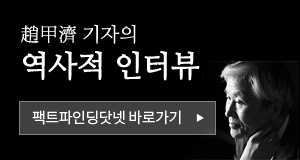49a-3-209
The cost of such a collapse scarcely bears thinking aboutand South Koreans for the most part are trying their best not to do so. The task would make West Germany's absorption of East Germany look like a doddle. South Korea is merely a middle-income country, with only a minimal social safety net to offer its own people, let alone abject North Koreans, who are perhaps 15 times poorer than their southern counterparts (whereas East Germans were two or three times poorer than West Germans at the time of unification).
So unification, if and when it comes, will require South Korea to field huge resources, however much help it might get from international institutions. That is a good reason to start building them up now. Yet there are also plenty of pressing home-grown reasons for more economic growth. The most important of these is a dramatic plunge in fertility. Today's birth rate is extraordinarily low, and heading lower. This is an Asia-wide trend, but South Korea's has fallen more than most. The total fertility rate of South Korean women (ie, the average number of births they can expect) has dropped to just 1.26 (see chart 1), down from 4.5 in 1970 and 1.5 in 2000. That is roughly half the rate at which a population replaces itself. In other words, the child-bearing generation 25 years from now will be roughly half the size of the current one. Even Japan, famous for its dearth of children, has a higher fertility rate, at 1.3.
A. 어휘
scarcely 거의...않다. bear thinking about 생각을 품다. absorption 吸收(흡수).
doddle 수월한 일, 누워서 떡 먹기. minimal 최소의. social safety net 사회안전망.
let alone ...은 물론이고, ...은 말할 것도 없이. abject 零落(영락)한, 비참한.
counterpart 상대, 한 쌍의 한 쪽. field 처리하다. institution 공공단체.
pressing 緊急(긴급)한, 절박한. home-grown 국내에서 발생한.
plunge 急降下(급강하). fertility 출산, 肥沃(비옥), 多産(다산). trend 경향.
fertility rate 출산율. replace 뒤를 잇다. child-bearing 출산.
the current one 현재의 출산세대. dearth 결핍, 부족.
49a-4-210
For South Korean women, as for those elsewhere in Asia, this appears to be a good thing, offering them greater security and more autonomy than ever before within a Confucian family structure that has historically been hierarchical and male-dominated. Even better, South Korea's mortality rate has also fallen steeply, and people can now expect to live 30 years longer than they did at the start of the country's modernisation in 1960.
Yet the fall in the fertility rate may reflect dissatisfactions too: notably, over the difficulties faced by women who want both to work and to raise a family. Almost everyone still gets married in South Korea. In other words, the fertility rate is falling because more women are postponing marriage to nearer the end of their reproductive lives. That is partly because the burden of raising children still falls heavily on women, whereas men are consumed with work, which in South Korea, as in Japan, entails long hours and drinking sessions late into the night.
Also as in Japan, companies, despite some improvement, still discriminate heavily against women, especially those with children. Just one-third of South Korean women go back to work after having children, half the OECD average. The World Economic Forum's ranking of sex equality puts South Korea 97th out of 128 countries. This represents a huge economic and social waste, and not only because South Korean women are better educated, on average, than their men.
A. 어휘
autonomy 자율, 자치권. Confucian family structure 유교적 가족구조.
hierarchial 階級的(계급적)인, 계급제도의. male-dominated 남성주도적인.
mortality rate 死亡率(사망률). steeply 가파르게, 엄청나게. reflect 반사하다.
dissatisfaction 불만. notably 두드러지게, 명백하게. postpone 연기하다.
reproductive 생식의, 번식의. consume 消盡(소진)하다, 소비하다.
entail 수반하다. session 會食(회식). discriminate 차별하다. sex equality 남녀평등.
represent 의미하다, 나타내다. waste 낭비. on average 평균적으로.
B. 구문
- difficulties faced by women=difficulties which were faced by women
[Special report] THE KOREAS ②
- 朴承用
- ▶ 필자의 다른 기사보기
- 2009-08-14, 13:16



















